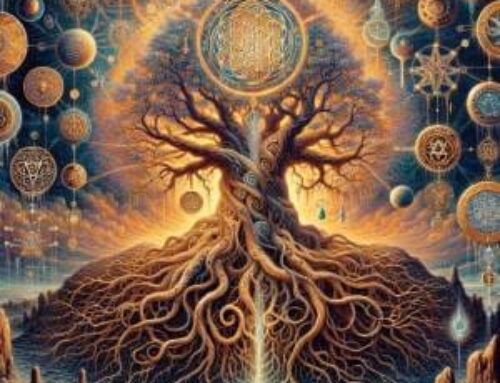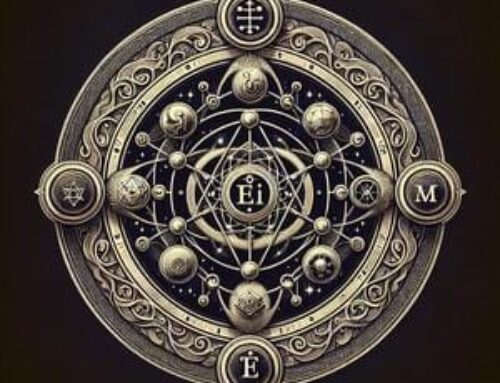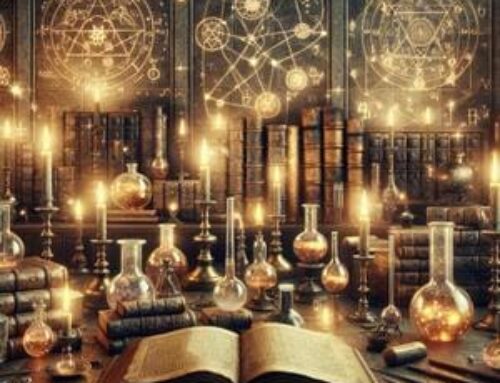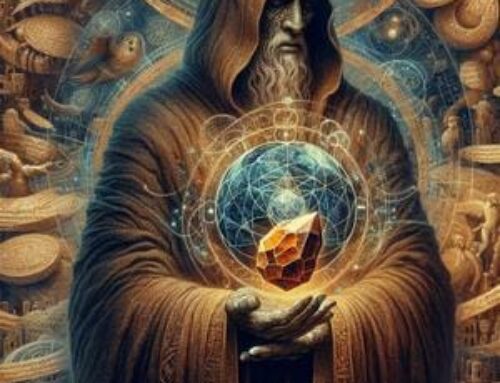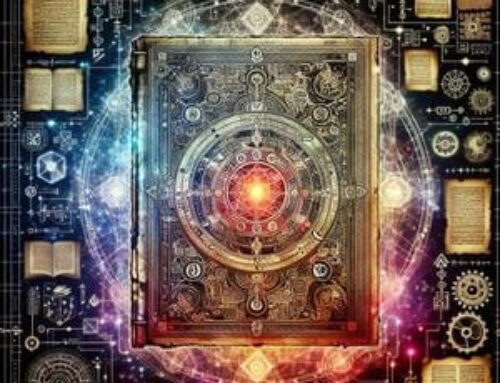Contents
- 1 Introduction to “Alchemy Tools”: Grasping the Tools and Principles of Alchemy
- 2 The Sacred Space: The Alchemical Laboratory
- 3 A Glimpse into the Alchemical Laboratory:
- 4 The Triad of Alchemical Principles: Sulphur, Mercury, and Salt
- 5 The Role of the Alchemical Laboratory
- 6 Conclusion of “Alchemy Tools”: The Alchemist’s Quest
- 7 FAQ- Alchemy Tools
- 8 References
Introduction to “Alchemy Tools”: Grasping the Tools and Principles of Alchemy
Alchemy—it’s not just about turning lead into gold. It’s a mystical blend of spiritual and material transformation, demanding a unique set of tools and principles. Imagine a place where the mundane meets the mystical—this is the alchemist’s laboratory, where transformation is not just a goal but a journey.

Spiritual journeying is a lifelong process that involves exploring one’s inner self and a larger cosmic consciousness (1).
The Sacred Space: The Alchemical Laboratory
Step into an alchemical laboratory full of Alchemy Tools, and you enter a world brimming with the potential for profound change. Historically, these spaces were the breeding grounds for groundbreaking discoveries. Nowadays, they might not always resemble the grandiose chemistry labs we imagine. An alchemist’s lab could be any place where the mysteries of nature are probed, even a quiet corner of one’s own home.
A Glimpse into the Alchemical Laboratory:
- Creativity and Knowledge: The hub where natural forces are experimented upon.
- Athanor: The heart of the lab—a furnace symbolizing inner transformation, crucial for various alchemical processes.
The Athanor isn’t just any furnace; it’s the furnace. It provides the consistent heat necessary for distillation, sublimation, and element combination, mirroring the steady inner fire required for personal transformation. In working with the Athanor, the number one of Alchemy Tools, alchemists unlock the hidden properties of substances, revealing the universe’s deepest secrets.
Prima Materia: The Core of Creation
Prima Materia, often referred to as the “First Matter,” is the cornerstone of alchemical work. This primordial substance is believed to be the origin of all things. For alchemists, the goal is to purify and transform Prima Materia, ultimately creating the Philosopher’s Stone. This substance, shrouded in mystery, is both the beginning and the end of the alchemical journey.
Key Aspects of Prima Materia:
- Origin and Foundation: The essence from which all creation springs.
- Purification and Transformation: Essential steps to uncover its true nature.
- Symbolic Significance: Embodies the alchemist’s journey towards enlightenment.
Prima Materia is the unformed essence that, once purified, leads to the creation of the Philosopher’s Stone—a symbol of ultimate perfection and enlightenment. The pursuit of Prima Materia has captivated alchemists since the 7th century, tracing back to the writings of Zosimos of Panopolis.
The Triad of Alchemical Principles: Sulphur, Mercury, and Salt
Alchemy’s intricate dance is choreographed around three principal substances: Sulphur, Mercury, and Salt. Each represents a different facet of both the physical and spiritual realms.
Sulphur: Sulphur is the spirit of matter, a symbol of energy, transformation, and will. Linked to fire, it represents the dynamism that drives alchemical processes. Sulphur’s associations with the color red, Mars, and the masculine principle underscore its fiery nature.
Sulphur represents the essence of matter that, when purified through alchemical work, reveals its hidden potential. The alchemist must master the energy of Sulphur to achieve the highest level of transformation. It is a symbol of the spirit trapped in matter, which is liberated and purified through the alchemist’s work.
Mercury: Mercury, or Mercurius, embodies the fluid consciousness of matter. It’s the harmonizer, central to the synthesis and integration that defines alchemy. Representing air, it’s tied to the color white, the planet Mercury, and the balance between opposites.
Mercury is essential for the alchemical process as it facilitates the union of Sulphur and Salt. It represents the transformative element that guides the alchemist towards the completion of the Great Work. The refined and purified Mercury, known as Mercurius Philosophorum, is key to unlocking the secrets of matter and achieving alchemical transformation.
Salt: Salt is the body of matter, providing stability and strength. It symbolizes the principle of earth, essential for materializing and preserving alchemical work. Associated with black, Saturn, and the feminine principle, Salt cleanses and prepares matter for transformation.
Salt is the purifying agent that cleanses matter of its impurities, preparing it for higher stages of transformation. It unites the polarities of Sulphur and Mercury, facilitating the crystallization and stabilization necessary for the alchemical process. Mastery of Salt is vital for the alchemist to achieve the elixir of life and the Philosopher’s Stone.
The Role of the Alchemical Laboratory
An alchemist’s laboratory and it’s Alchemy Tools, is both a physical space and a metaphor for internal transformation. It’s where natural forces are manipulated to achieve the Great Work, the ultimate goal of alchemy (2). This space, whether grand or humble, serves as the crucible for discovery and enlightenment.
Conclusion of “Alchemy Tools”: The Alchemist’s Quest
Alchemy transcends mere science—it’s an art form, a sacred practice aiming to purify and perfect both matter and spirit.
It is a complex philosophical system that aims to understand creation and life, with transmutation of metals being a secondary goal (3). By mastering the tools of alchemy, practitioners unlock nature’s secrets, gaining deeper insight into the universe and their place within it. For those drawn to explore these ancient mysteries further, the Hermetic Academy offers resources and training to delve into this profound art.
Alchemy is not just a science but an art that requires a profound connection between the alchemist and the materials they work with. This sacred practice aims to purify and perfect both matter and spirit, leading to a deeper realization of the divine order. The Hermetic Academy offers further resources and training for those who seek to explore these ancient mysteries in depth.
FAQ- Alchemy Tools
1. What is the role of the Athanor in alchemy?
A: The Athanor is a special furnace providing constant heat necessary for alchemical processes, symbolizing the inner transformation of the alchemist.
2. What is Prima Materia?
A: Prima Materia is the fundamental substance believed to be the origin of all things, the starting point and goal of alchemical transformation.
3. What do the Three Principles in alchemy represent?
A: The Three Principles—Sulphur, Mercury, and Salt—represent different aspects of physical and spiritual matter: energy and transformation, fluidity and harmony, and stability and crystallization, respectively.
4. How does the alchemical laboratory function?
A: The alchemical laboratory is a place for experimentation and discovery, where alchemists can manipulate natural forces to achieve transformation. It is both a physical space and a symbol of the alchemist’s internal work.
5. Where can I learn more about alchemy?
A: For those interested in deeper exploration of alchemy, the Hermetic Academy offers resources and training in the authentic practices of this ancient art.
References
(1) Keegan, L. (1991). Spiritual Journeying. Journal of Holistic Nursing, 9, 14 – 3. https://doi.org/10.1177/089801019100900103.
(2) Rubenstein, E. (2023). Alchemy: Secrets of Consciousness Transformation. Hermetic World, Paphos.
(3) Read, J. (1933). Alchemy and Alchemists. Nature, 168, 759-762. https://doi.org/10.1038/SCIENTIFICAMERICAN1052-72.

